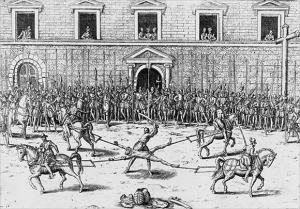Legacy technology of library catalogs affects us today. What is the term “enter under” in AACR2 if not a throw-back to the book catalog where indeed titles were literally entered under the author’s name? In 2009, we are creating bibliographic metadata using a code of rules developed quite separately from any computerization of data, a set of rules that was implemented at a time when the size limits of the catalog card and the searching limitations of the card catalog were still the norm. Think back to 1978, those of you who are old enough to have been in libraries then.
As the linked data grassroots folks clarified at their ALA session (see the powerpoint slides at http://wikis.ala.org/annual2009/index.php/Grassroots_Programs), we are in a different world in terms of data structures and possibilities. The change is not simply to our bibliographic records as it was throughout the 20th century but from bibliographic records to something else entirely. The Marc format, yes, was a communications format for bibliographic data but it was also a handy-dandy card set maker, the most obvious instances of that being the Festschrift byte and the second indicator of the 245. (Try explaining the utility of the Festschrift thingie without going into divided catalogs and card printing profiles!)
We have been developing our data content standards and our data structure definitions in isolation from each other. AACR2 and MARC were developed and maintained by two different groups of folks under different auspices, often at cross purposes (though not at odds with each other, just separated and sometimes unaware). Are we headed in that direction again?
Just as AACR2 wasn’t, RDA is not an open standard. It is an owned publication. As such, its maintenance and distribution will be limited by concerns related to publication ownership. Many will be priced out of having access to it while still trying to apply it in data they share with the rest of us. This is wholly antithetical to the development of data standards that are trying to “leave the silo.” It’s not that there is some evil corporate empire behind this control over our cataloging code. We did this to ourselves, starting with the first publication of ALA Rules in 1883.
The changes we must embrace are fundamental. We need to embrace openness in our standards development, joining the rest of the world in what makes the Web work. If we want to encourage use of a standard we must make it readily available to anyone creating bibliographic metadata.
We need to acknowledge that the stand-alone bibliographic record as we know it is not a valid structure in the linked data world. We need to understand that catalogs may work best if instead of policing access to the data we encourage more open wiki-style data development.
We need to figure out how we deal with the change in the economics of bibliographic metadata that must occur for libraries, vendors, system developers, and data providers. LC doesn’t want to be the world’s chief cataloger anymore. Nobody other than OPAC folks who have to will pay ALA for access to RDA when other, more open, metadata practices are available.
If we strive now to adopt RDA while shoe-horning the results into MARC-based bibliographic records and our current models of who does what, are we wasting our time on development of work arounds when we could be developing a wholly new environment? Are we going to spend hundreds and thousands of man-hours training catalogers and other library workers how to do this awkward adaptation thereby delaying our ability to pay for the eventual greater change?
We have to solve the issues of data structure and infrastructure before we go worrying about how we train catalogers to adopt RDA to Marc and the rule of three, don’t we? I think back to the hours and hours of labor spent on adopting heading changes in card catalogs for AACR2 in the early 80s, changes that really didn’t affect access and would be much easier a few years later in online catalogs.
So, what exactly does the current testing of RDA by the chosen 20 comprise?
(Unfortunately, I was not able to attend the grassroots meeting and am basing my reference to that group on their slides and other writings by the individuals in the group.)
 Do you feel somewhat like this guy in the middle? I know I do and I’m not even running a cataloging operation. All I really have to do is figure out what the heck I should concentrate on in the upcoming cataloging class. I mean, is it fair to ask them to purchase AACR2? Will ALA Publishing have any in the warehouse? I don’t imagine they plan to print more. No, I don’t expect specific answers to those questions here.
Do you feel somewhat like this guy in the middle? I know I do and I’m not even running a cataloging operation. All I really have to do is figure out what the heck I should concentrate on in the upcoming cataloging class. I mean, is it fair to ask them to purchase AACR2? Will ALA Publishing have any in the warehouse? I don’t imagine they plan to print more. No, I don’t expect specific answers to those questions here.